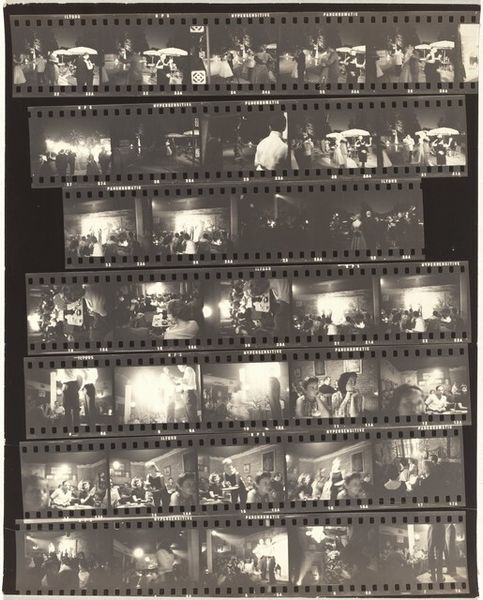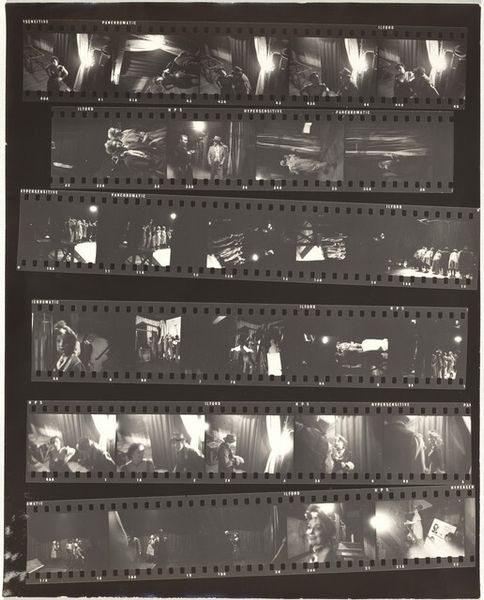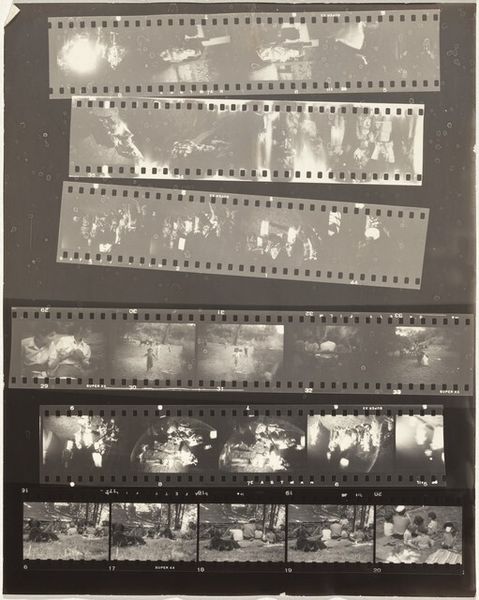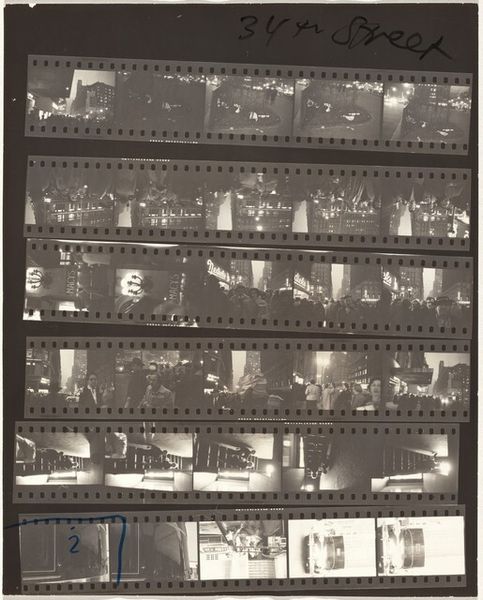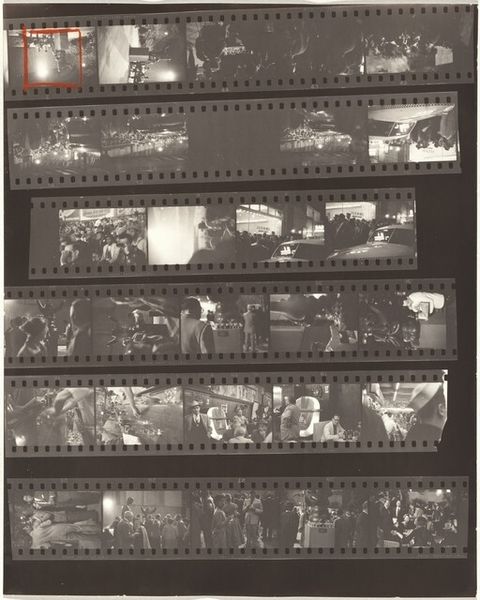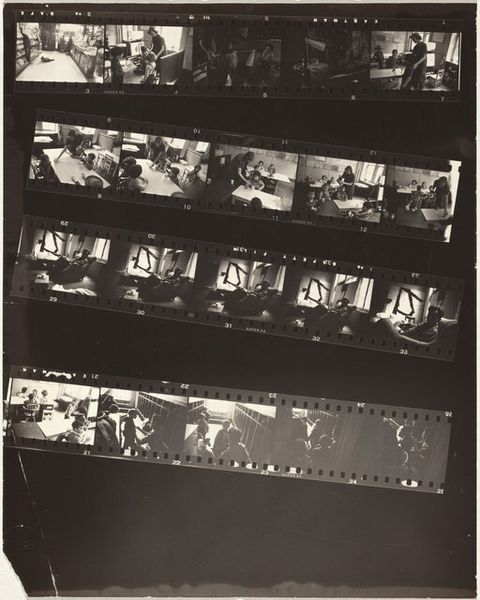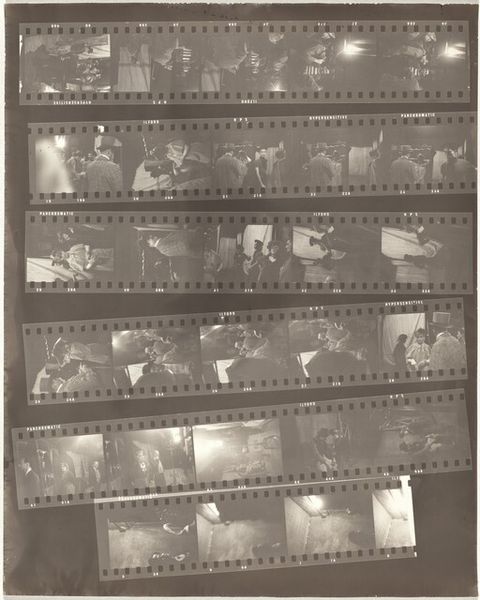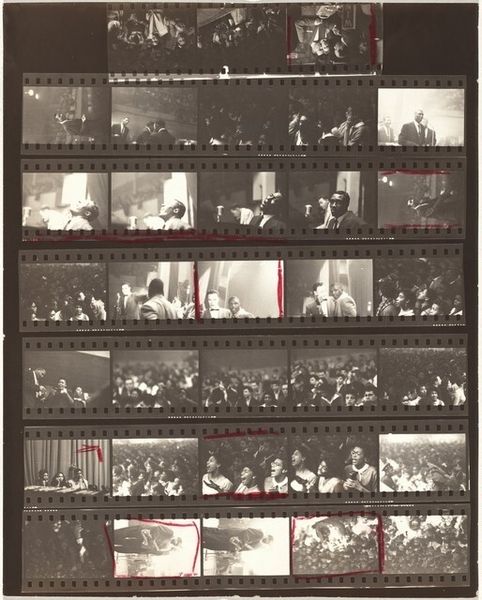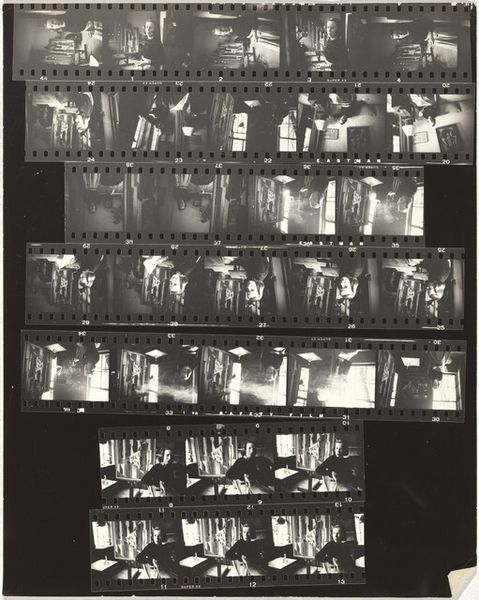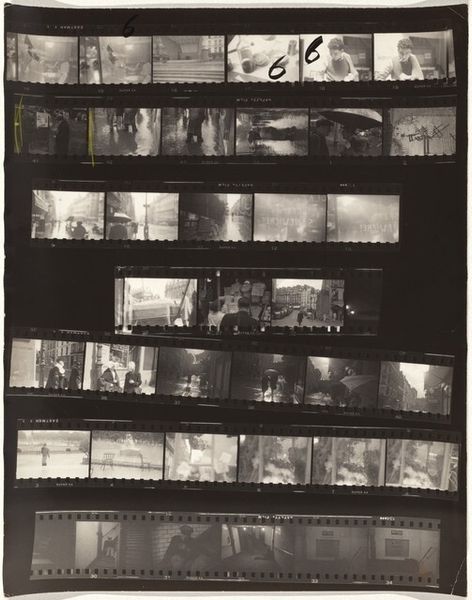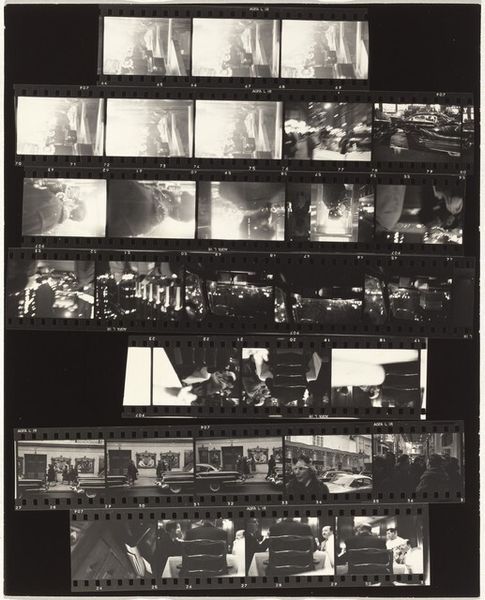
print, photography, gelatin-silver-print
#
print photography
# print
#
archive photography
#
street-photography
#
photography
#
gelatin-silver-print
#
monochrome photography
#
modernism
#
monochrome
Dimensions: sheet: 25.2 x 20.2 cm (9 15/16 x 7 15/16 in.)
Copyright: National Gallery of Art: CC0 1.0
Editor: This is Robert Frank's "Three Penny Opera II," a gelatin silver print from around 1957 or 1958. The photographic film strip presentation feels really raw and immediate. I’m curious, how do you see this piece in the context of its time? Curator: It's interesting you pick up on that immediacy. Frank was very much working against the grain of established photography. What do you think this photographic style achieved? How did this style contribute to the imagery becoming public? Editor: I guess it’s showing a more authentic version of reality, unfiltered and honest? Was he making a conscious choice to challenge artistic conventions? Curator: Absolutely. Consider the cultural landscape of the late 1950s. Frank, influenced by European modernism, rejected the glossy, optimistic images often presented in American media. “The Americans,” the photo book in which images like these appeared, were perceived as stark and even critical of American society. What statements are the public able to now make about American Society because of the style that Frank brought to it? Editor: So, by displaying this somewhat rough and spontaneous style, he's encouraging a more critical reading of everyday life? This is far from being staged or set up... the common citizen can see themself, too. Curator: Exactly! Frank used the camera almost like a cultural critic. The accessibility of his style invited a broader audience to engage with the art form. Does the layout—the film strip—play into the photo's themes of revealing something otherwise hidden? Editor: It does seem like the photographic film strip makes the process part of the point, highlighting that he’s selecting specific moments or editing as a way to direct the audience. This isn’t just passively capturing an image. I now see his photographs less as neutral observations and more like carefully constructed commentaries on the society around him. Curator: Indeed. It prompts us to consider how Frank's stylistic choices impacted how the public engaged with his art and the broader societal conversations it sparked.
Comments
No comments
Be the first to comment and join the conversation on the ultimate creative platform.
